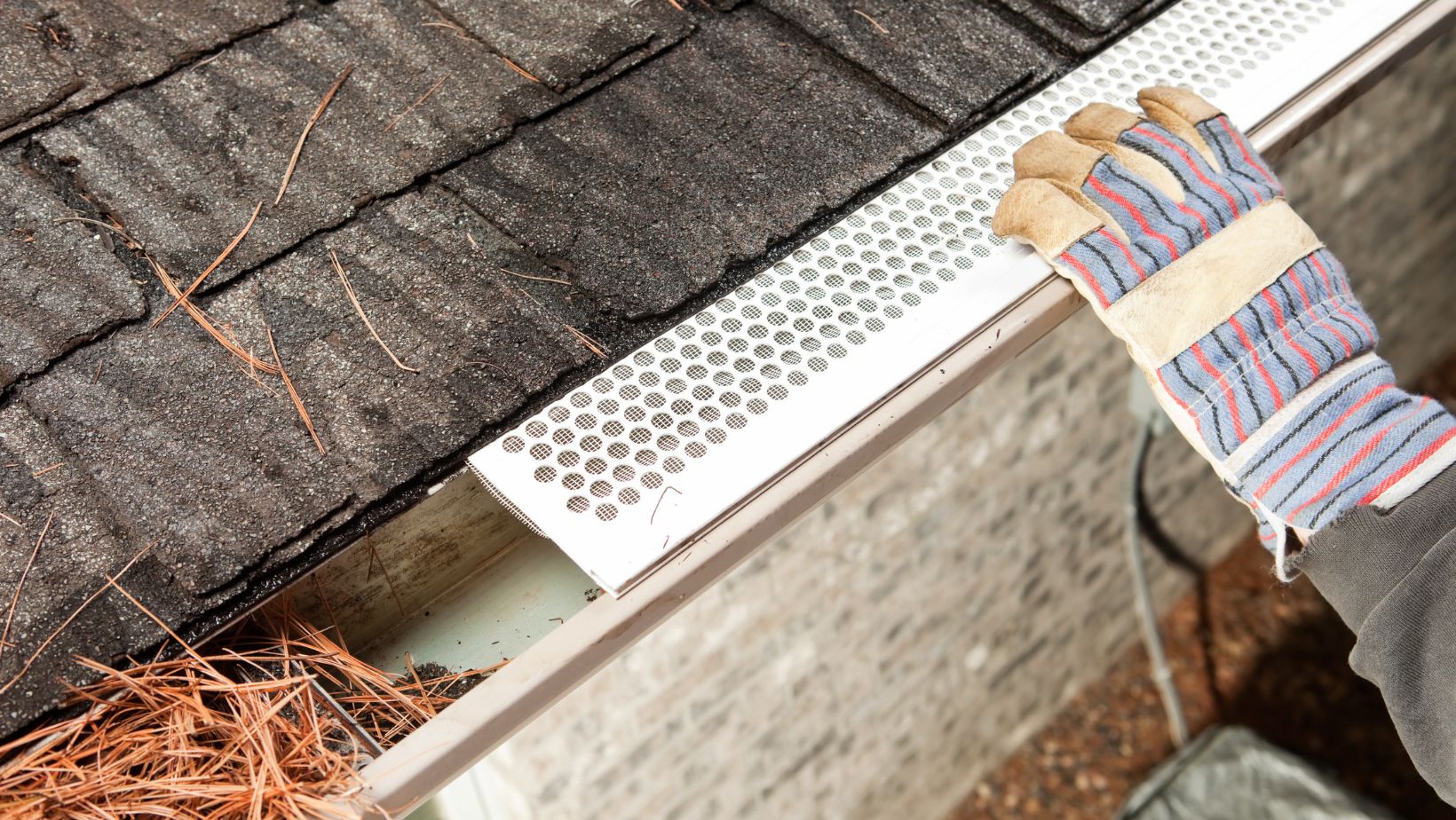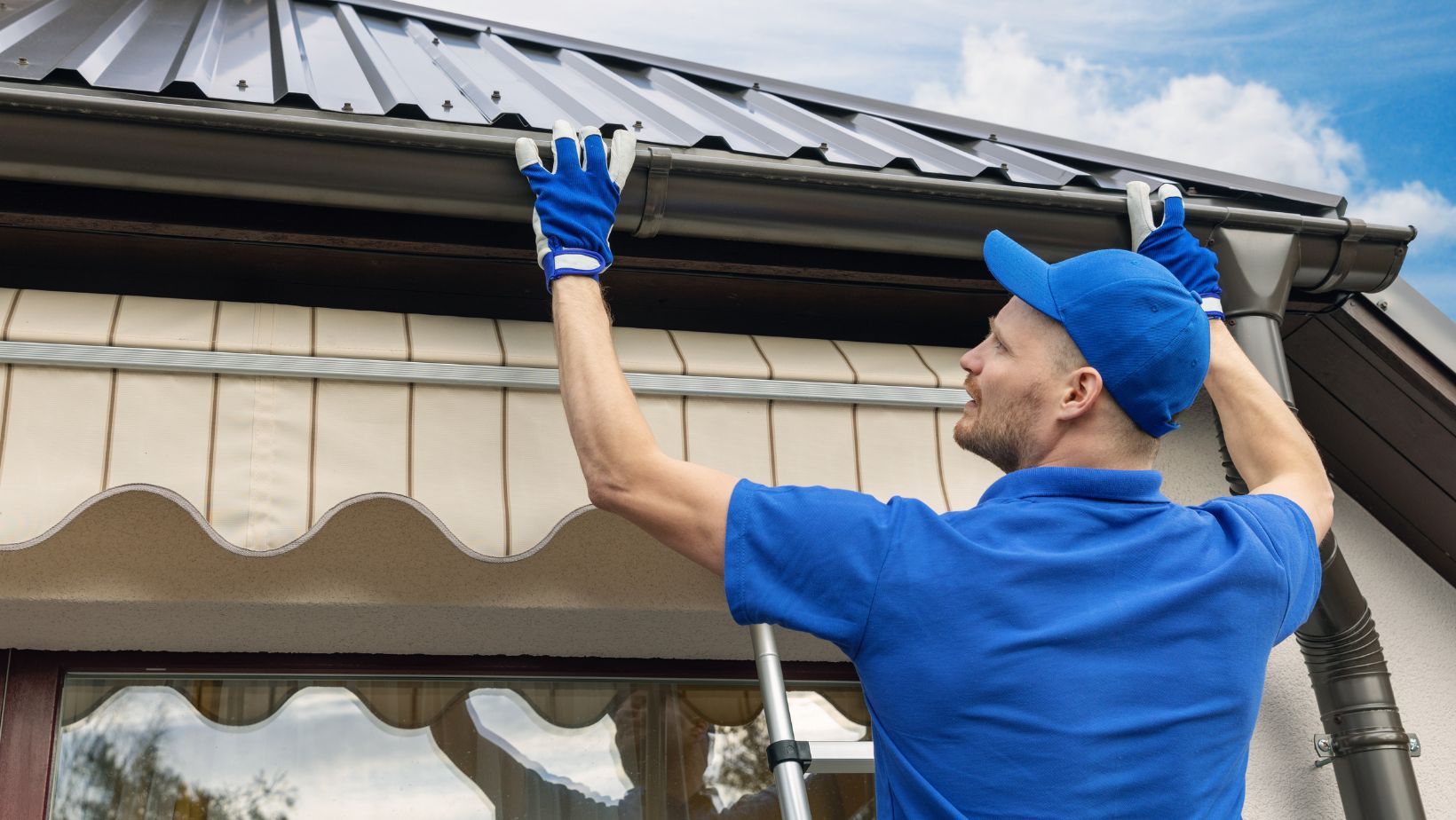
Gutter protection can be a critical component of weatherproofing your house.
They work silently to keep your haven dry and safe by keeping the gutters clean so they can divert rainwater away from your house. The truth is, of course, similar to every other product in the marketplace: Not every gutter guard is made or performs equally. And some designs work better in some places than they do in others.
You’ve undoubtedly seen the hardware store’s advertisements and aisles filled with possibilities, ranging from foam inserts to micro-meshes to something that seems solid on top.
All of them promise, and some even guarantee, to keep your gutters clear and unobstructed from debris. This raises sensible questions for most homeowners looking for a solution.
Do all the designs work? Do they all work well? How do I make a decision for my home?
The goal of this article is to help you get your answers to those questions.
The 3 Common Problems with Most Gutter Guards
Gutter guards often need to catch up on the promises made of them.
If you’ve looked into this industry, you know the pain we’re talking about. How can there be so many conflicting feedbacks? Let’s be upfront and summarize what you’ll find if you thoroughly research this subject on the internet.
They Still Clog
Despite their noble mission of keeping debris out, some gutter guards create more problems for homeowners than they solve. Various types of debris continue to clog either the gutters, the openings in the cover, or the top of the mesh or leaf filter.
The result? Water overflowing the gutters created the same issues the product was purchased to solve. But now you have to mess with cleaning the gutter AND the cover.
They Still Need Frequent Cleaning
Picture this: You’ve installed gutter guards to avoid scaling ladders and wrestling with leaves.
But guess what? You have to get the ladder out to clean the leaf filters or guard you just purchased! Certainly not what you had in mind when you invested your hard-earned money.
Low-Quality Materials
Gutter guards, bless their little hearts, aren’t immortal.
Over time, exposure to the elements takes its toll. UV rays, rain, and snow transform them from sturdy protectors to weathered veterans. Eventually, they sag, warp, or crack, leaving your gutters vulnerable once more
3 Types of Gutter Guards
Regarding gutter guards, it’s like choosing the right shoes for your gutters. There’s no one-size-fits-all—each type has its quirks:
Screen Gutter Guards
Imagine a metal or plastic grid covering your gutters. That’s the screen guard. Its job? Allow water to flow through while giving debris the cold shoulder. Leaves, twigs, and other freeloaders?
Not on its watch!
It’s a mesh or perforated sheet that fits snugly over your gutters, keeping the riffraff out. Screen guards are easy to install. They slip on like your favorite cozy socks. They come in different sizes—small, medium, and large. Just pick the one that fits your gutters.
Pros:
- They are usually the most budget-friendly. You’ll find screen gutter guards at most home improvement stores. Wallet-friendly, DIY, and accessible.
- They block big debris, such as leaves and twigs.
Cons:
- Maintenance is required! While they usually fend off the big guys, smaller items (think pine needles, whirly birds, oak tassels, etc.) will clog the holes. Once those holes are clogged, the water will overflow, so you must keep the screens clean on top.

- In colder climates, snow and ice can camp out on top of the screens. Water flow? Blocked.
Mesh and Micro-Mesh Gutter Guards
The concept, with almost imperceptible differences in design, is the same as a screen, just with smaller holes.
Pros
- Debris Repellent: Mesh guards fend off leaves, twigs, usually pine needles, and other debris. Water flows freely.
- The DIY options are budget-friendly: No need to break the bank.
Cons
- Maintenance Alert: Meshes are literally a filter in every sense of the word. It lets air and water through and basically nothing else. Over time, fine debris—dirt, pollen, roof granules, etc— gather on the mesh. This may require hand washing to get off.
- The cost can vary dramatically, so be cautious of supposed ‘high-end’ versions of this. The design and functionality are basically the same, whether it’s cheap or expensive, so be careful here.
- Although this is not usually the case, heavy rains or debris-heavy areas can overwhelm the mesh. The small openings might struggle to handle the heavy rainfall.
Reverse-Curve Gutter Guards
The reverse-curve gutter guard is an alternative to the screen/mesh/micro mesh. It employs a different design to control the water. It uses surface tension to control the water over a curved edge while keeping debris out.
Pros
- Keeps the gutters free of clog-creating debris.
- If designed and installed properly, it should have the least amount of maintenance of any cover system.
- Keeps out critters and birds.
Cons
- This product is not a DIY option. If not installed correctly, expect serious problems with water overflow.
- If the rounded nose of the system does not stick out far enough in its design, it can allow debris to accumulate in the opening, leading to water overflow. So, if considering, look for a ‘nose-forward’ system.
- This design, in our experience, hits the mark the best between controlling water and keeping maintenance to a minimum. However, because of the heavy duty materials often used, expect an investment upfront.
Introducing the Innovative Advantage Gutter Guard ®
Now, picture a solid surface gutter guard with all those pros but designed not to have the cons. Introducing the Advantage Gutter Guard®.
This gutter guard is not your typical gutter guard. It is the product of painstaking engineering and is made to withstand Mother Nature’s whims and the test of time.
Key Features of the Advantage Gutter Guard ®
It doesn’t clog. For real. And if it ever does for some reason, the lifetime, fully transferable warranty takes care of that clog for you.
The Advantage Gutter Guard ® actually reduces your maintenance. Rather than just give you one other thing to clean. Like all things we own, it does require some maintenance. But most of our thousands of customers only have to spray their system down once or twice a year with a hose from the ground.
And that’s it. No more ladders and danger and gutter muck.
The Advantage Gutter Guard ®, which is made of premium materials (All aluminum or aluminum and copper), is an example of innovative home maintenance.

But don’t just take my word for it. The performance, or the pudding, in this case, is the proof. The Advantage Gutter Guard ® system is unique in the market and is installed alone by a team of experts with a patent.
It can withstand three times the water volume of an average downpour, according to extensive testing.
Wrapping Up
To sum up, not every gutter guard is made equally. There are many different types of materials, designs, and installation techniques available on the market, each with pros and cons of their own.
The efficiency of gutter guards, whether foam inserts or micro-mesh screens, mostly depends on particular environmental factors and upkeep needs.
Before choosing a gutter guard, homeowners should carefully analyze the local weather patterns, vegetation, and kind of roof. They should also compare leaf filters versus gutter guards before making a decision.
That being said, the Advantage Gutter Guard ® is a solid option if you’re searching for something long-lasting. Unlike many other solutions, it is designed to fulfill its promises without causing any trouble.
Made from premium materials, it requires very little care and manages rainwater expertly. For peace of mind, therefore, think about the Advantage Gutter Guard®.





